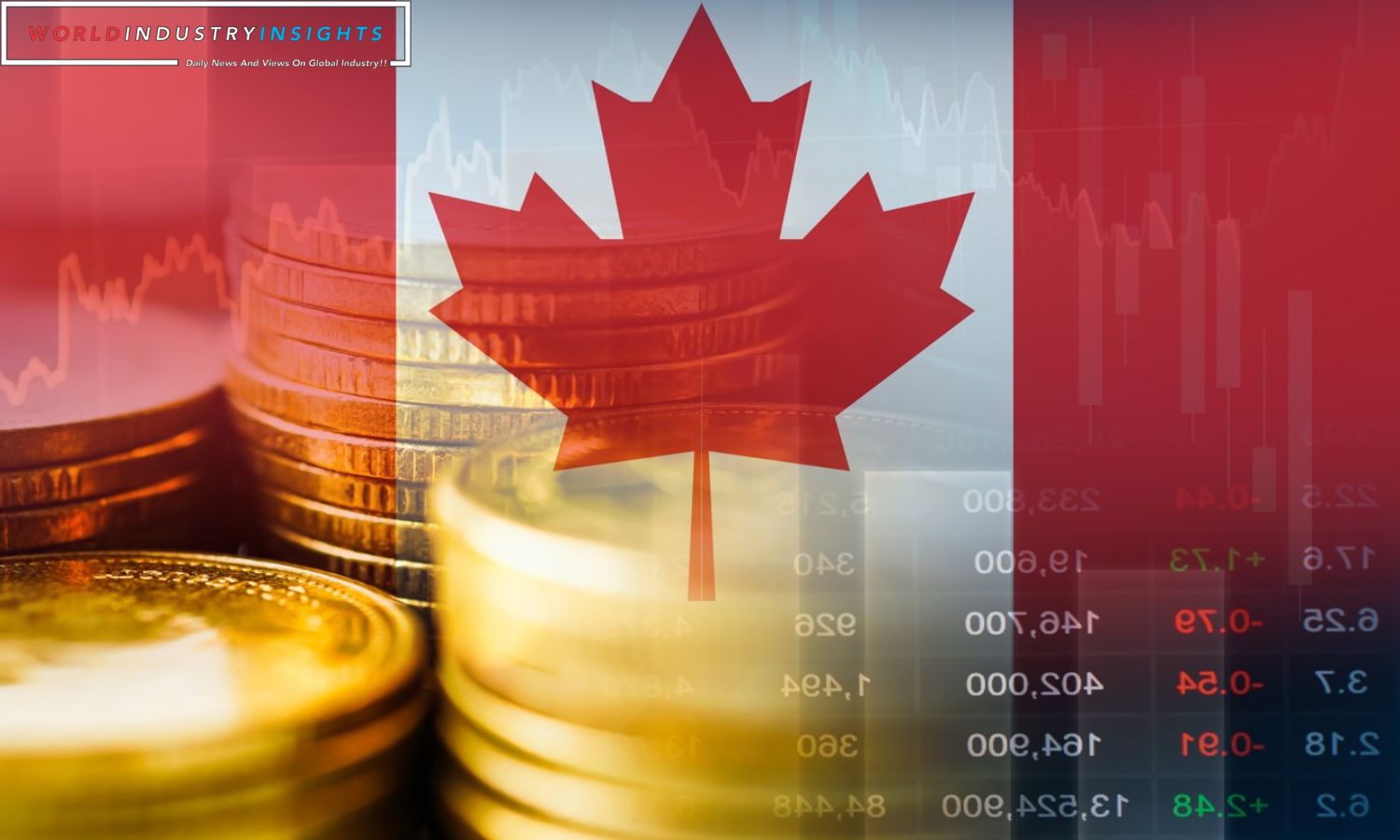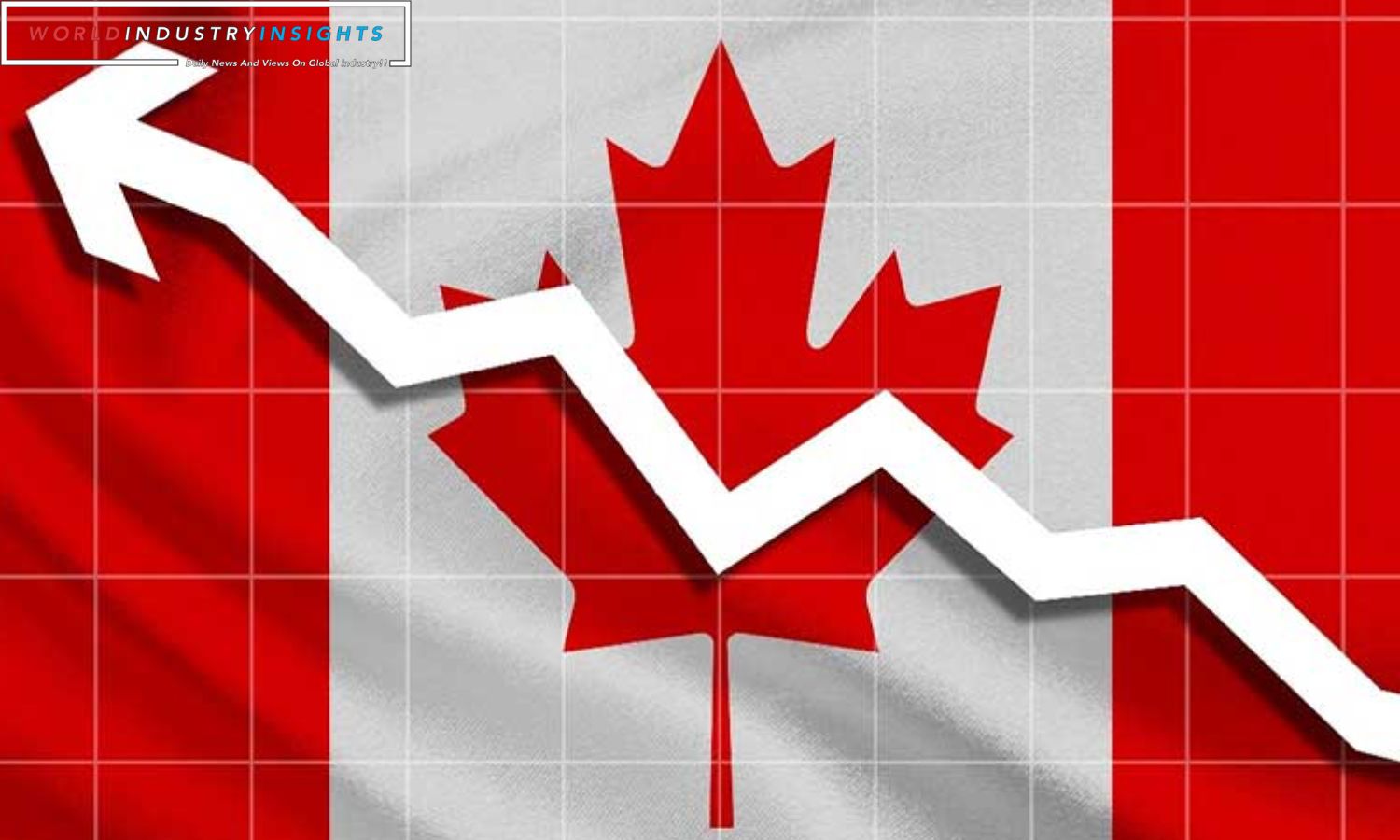Canada Economic Twists: In an unexpected twist, Canada’s economic journey takes a challenging turn as it records an unexpected contraction of 1.1% in the third quarter. This unforeseen downturn has left analysts and policymakers reassessing the economic landscape and contemplating the potential implications for the nation’s financial future.
The third-quarter economic data has proven to be a deviation from expectations, falling below the forecasted 0.2% increase in gross domestic product (GDP). Even the Bank of Canada‘s (BoC) projection of a 0.8% gain seems optimistic in the face of these unexpected challenges. While Canada manages to avoid slipping into a technical recession, defined by two consecutive quarter-on-quarter contractions, the revised second-quarter GDP data paints a nuanced picture.
A crucial factor preventing a technical recession is the revision of second-quarter GDP data, which shows a 1.4% gain instead of the initial report indicating a 0.2% decline. This revision provides a silver lining, highlighting the resilience of the Canadian economy amid ongoing uncertainties.
Despite averting a technical recession, Canada’s economy is facing headwinds that are impeding its growth trajectory. Chief economist at BMO Capital Markets, Doug Porter, remarks, “The big picture here is the economy is struggling to grow, but it is keeping its head just above recession.” The metaphor of “swimming upstream” aptly captures the challenges that the Canadian economy is currently navigating.
Also Read: Royal Bank of Canada (RY.TO) Q4 Profits Surge Amid Economic Uncertainty
In the aftermath of the economic data release, the Canadian dollar experiences a 0.2% decline against the U.S. dollar, trading at 1.3620. This market reaction reflects the impact of the unexpected economic contraction on the nation’s currency and raises questions about the potential monetary policy response from the Bank of Canada.
The Bank of Canada, having maintained a holding pattern since July, faces renewed scrutiny as market expectations for a rate cut gain momentum. With concerns about economic growth persisting, the central bank’s upcoming decisions, especially the one scheduled for next week, are viewed as pivotal in shaping the economic trajectory.
Market dynamics suggest that a rate cut may be on the horizon, with money markets anticipating a move as early as March. The central question revolves around whether Governor Tiff Macklem’s recent assertion that interest rates might be at their peak can withstand the challenges posed by weak growth and persisting economic uncertainties.
As Canada grapples with unexpected economic contractions, the path forward remains uncertain. The upcoming decisions of the Bank of Canada will play a crucial role in determining how the nation navigates these economic challenges and whether proactive measures will be taken to stimulate growth. The intricate dance between economic data, market responses, and policy decisions underscores the complexities inherent in steering the Canadian economy through uncharted waters.
Our Reader’s Queries
What is Canada’s current economic situation?
Canada’s economy has shown remarkable resilience after the pandemic recession. The unemployment rate has remained low, with over a million more Canadians employed than before the pandemic. Additionally, wage growth has outpaced inflation for the past nine months, indicating a strong recovery.
Is Canada in a recession 2023?
According to Oxford, the initial theme is a moderate recession that will be followed by a subdued recovery. The recession began in Canada during the third quarter of 2023 and is expected to persist until the second quarter of 2024. This will result in a 1.1% decline in gross domestic product from peak to trough.
Is Canada a booming economy?
Statistics Canada’s latest data, released on Friday, revealed that the Canadian economy remained stagnant in October. This was contrary to the predictions of analysts polled by Reuters, who had anticipated a 0.2% month-over-month increase. Furthermore, September’s GDP was revised downwards to zero growth from the initial report of 0.1% growth.
What is Canada’s biggest economic activity?
This country boasts of thriving industries in real estate, mining, and manufacturing, with some of the biggest mining companies in the world calling it home. A significant chunk of its GDP is derived from international trade, with the U.S., China, and the U.K. being its top trading partners. But what exactly are tariffs, and how do they impact you?


